Femininity:
The social expectations of being a women. It refers to the roles, behaviours and attributes that are considered appropriate for girls and women in a given society.
Masculinity:
The social expectations of being a man. It refers to the roles, behaviours and attributes that are considered appropriate for boys and men in a given society.

Summary
Femininity and masculinity are a binary opposite, which means they are relative terms, which mean the opposite. Examples of binary opposites:
• Good vs Evil
• Light vs Dark
• Young vs Old
• Peace vs War
Binary opposition originated in Saussurean structuralist theory in Linquistics (scientific study of language). According to Ferdinand de Saussure, binary opposition is the system by which, in language and thought, two theoretical opposites are strictly defined and set off against one another. Using binary opposites can often be very helpful in generating ideas for a photographic project as it provides a framework, which provides a set of boundaries to work within.



Influences on Gender
Someone’s femininity or masculinity may be influenced by the place they live, or the upbringing they have. This can be due to different cultures, society, workplace etc. Culture can influence gender identity (femininity and masculinity), because it can either maximise (women should be a mother and housewife), minimise (men and women are seen as equals in most things, but not all, so there are still some set rules for each gender) or eliminate gender completely (men and women are totally equal and have no set roles). This shows that femininity and masculinity is just a made up construct and stereotypes are not always correct, but can also sometimes be more pushed depending on culture, upbringing, place or origin etc. Some examples of stereotypes that push the idea of femininity and masculinity are:
• Women are supposed to be housewives and mothers
• Men are supposed to be tough and strong
• Men are supposed to singularly provide
• Women are not supposed to be business women

Stereotypes are societies way of influencing gender (femininity and masculinity), because it promotes a certain standard that ‘everyone should follow by.’ Society causes some people to follow these stereotypes, because it makes them seem more socially desirable. This means that society can cause women to be more feminine, or men to be more masculine, even if that is not what they want or how they feel.
However, there are many groups in society, which do the opposite, such as pride. Pride promotes that you can be yourself, so if a man feels more feminine he can be, or if a women feels more masculine she can be.

Even workplaces can sometimes promote or not promote femininity and masculinity. Some workplaces may believe that business women do not have time for kids, family or a relationship at the moment, as they are so business orientated. This goes against the female stereotype that women should not work, because they should be a housewife and raise their children. Stereotypically they are now seen as less feminine and more masculine, because the men are stereotypically seen as the workers and providers.
Claude Cahun
Claude Cahun, born Lucy Schwob was a French photographer, sculptor, and writer. Cahun changed her name from Lucy to Claude, because Claude is a gender neutral name, meaning it can be used for a women or a man. She did this to experiment with gender fluidity. She is best known for her self-portraits in which she assumes a variety of personas, including dandy, weight lifter, aviator, and doll. The Jersey Heritage Trust collection represents the largest repository of the artistic work of Cahun who moved to the Jersey in 1937 with her stepsister and lover Marcel Moore. She was imprisoned and sentenced to death in 1944 for activities in the resistance during the Occupation. However, Cahun survived and she was almost forgotten until the late 1980s, and much of her and Moore’s work was destroyed by the Nazis, who requisitioned their home. Cahun died in 1954 of ill health (some contribute this to her time in German captivity) and Moore killed herself in 1972. They are both buried together in St Brelade’s churchyard.
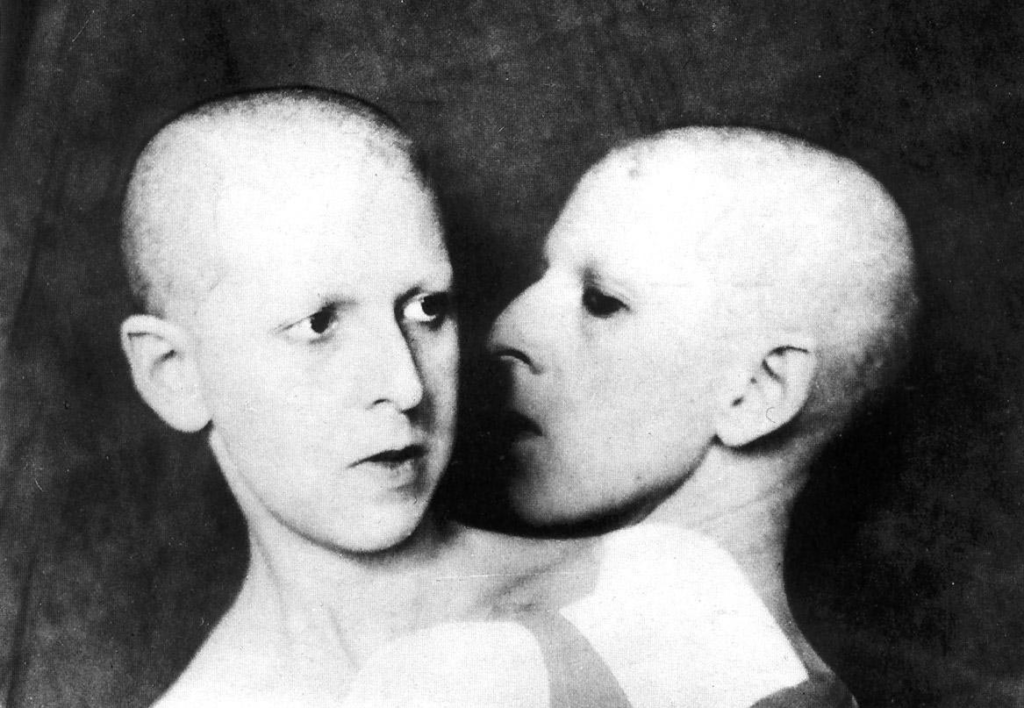
In this image, Cahun has shaved her head and is dressed in men’s clothing. She did this to defy conventional ideals of beauty and femininity, so she could show society that she didn’t have to be extremely feminine to still be beautiful. She once explained: “Under this mask, another mask; I will never finish removing all these faces.” This can be interpreted as that there are so many different levels to her all hidden beyond the surface and that just because of how she looked it does not have an impact on her personality or beauty.
Cahun was friends with many Surrealist artists and writers; André Breton once called her “one of the most curious spirits of our time.”
While many male Surrealists depicted women as objects of male desire, Cahun staged images of herself that challenged the idea of the politics of gender. Cahun was championing the idea of gender fluidity. She was exploring her identity, not defining it. Her self-portraits often interrogates space, such as domestic interiors and Jersey landscapes using rock crevasses and granite gate.
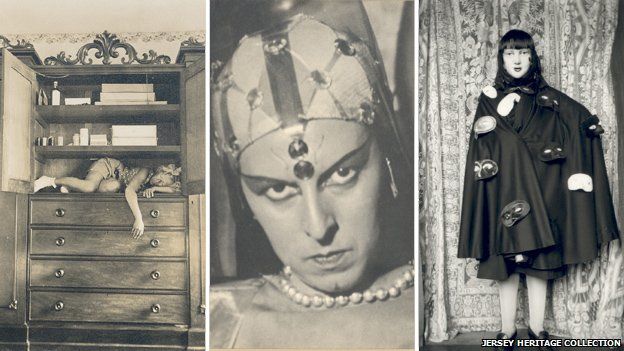
In 2017 the National Portrait Gallery in London staged a major exhibition Gillian Wearing and Claude Cahun: Behind the Mask, Another Mask showing their work together for the first time. Slipping between genders and personae in their photographic self-images, Wearing and Cahun become others while inventing themselves. “We were born in different times, we have different concerns, and we come from different backgrounds. She didn’t know me, yet I know her,” Wearing says, paying homage to Cahun and acknowledging her presence. The bigger question the exhibition might ask is less how we construct identities for ourselves than what is this thing called presence?

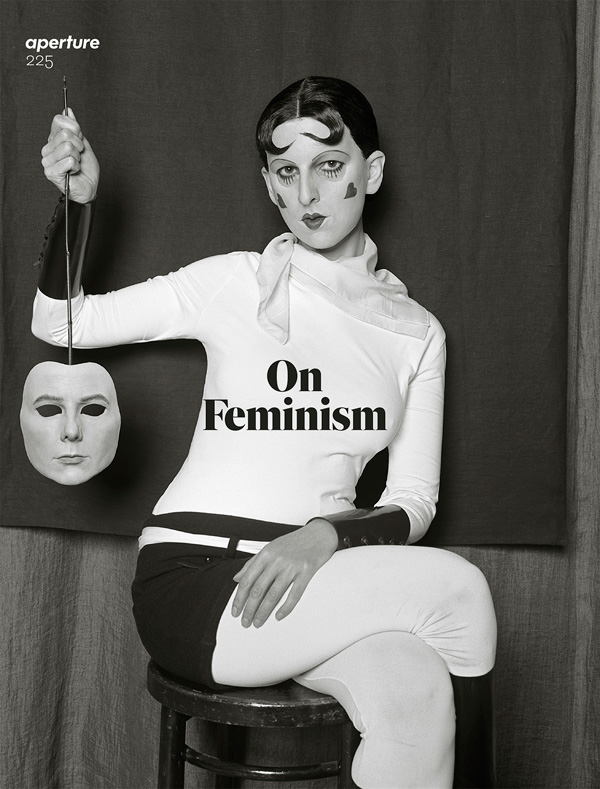
In the image on the left it is Cahun is the model and the photographer. In the image on the right the model and photographer is Gillian Wearing, who was inspired by Cahun and her experimenting with gender fluidity when it was dangerous and not accepted in her time. In this photographic self-portrait, Gillian recreates Cahun’s self-portrait from the ‘I Am In Training Don’t Kiss Me’ series which Claude made in 1927. She did this by photographing her creation a mask that looks like Claude Cahun’s face in the series and then holding another mask to her right which is a replica of her own face.
‘We are only just catching up to her’
Gillian Wearing said this about Claude Cahun, which suggests how Cahun was so ahead of her time, while she was experimenting with gender and gender fluidity. She is now a huge inspiration to modern day people, like the LGBTQ community.
I agree with Wearing’s statement here, because society were only just starting to accept people who had the same beliefs as Cahun, and it is now much more normal and accepted, whereas in Cahun’s time it was dangerous to experiment with gender fluidity and to have her belief’s. However, Cahun still did this and presented it to the world.
Cahun represents the idea that masculinity and femininity do not have to be defined and that anyone can be either feminine or masculine, no matter their gender. She shows this by looking and creating more masculine artwork of herself, a women, to really push the idea that femininity or masculinity are not a main factor in beauty and anyone can beautiful either way. She pushes the idea of gender fluidity, which means she can either be masculine or feminine depending on what she wants and finds beautiful at the time. This supports her analogy of her endless masks, because it shows that she will forever keep changing and will never stay the same, especially not just for social approval.
Image Analysis
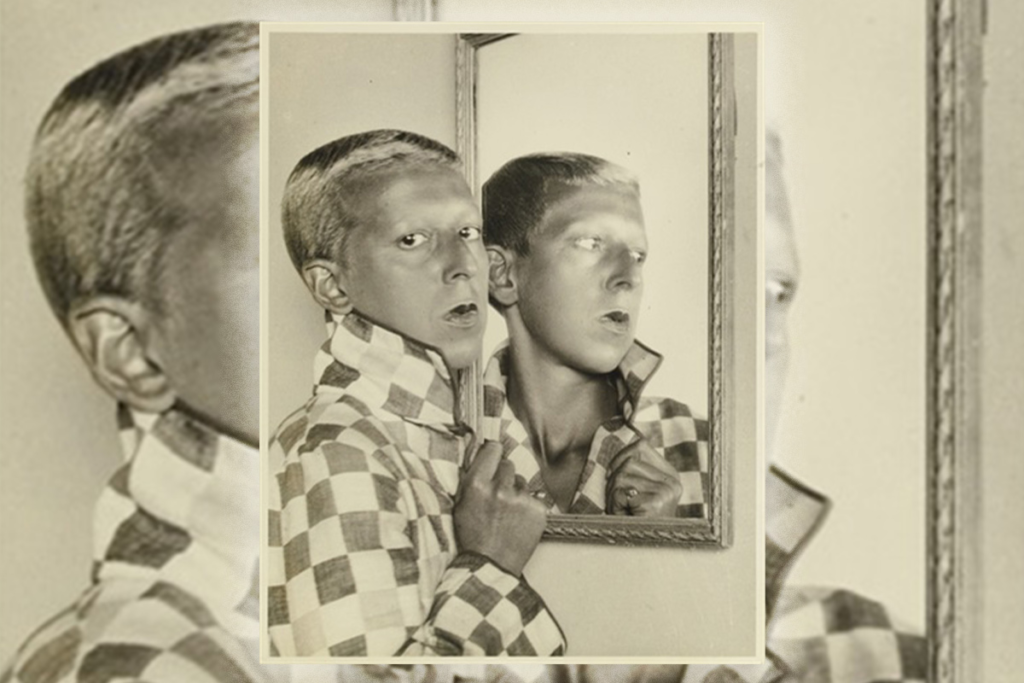
This photograph was taken by Claude Cahun and is of Claude Cahun. However, she is dressed up and becoming another ‘character’, or ‘version of herself’, as she is ‘removing another mask.’ This image really looks into the topic of femininity and masculinity, because Cahun (a women), who should be seen as more feminine according to society standards, actually looks much more masculine. She looks much more masculine, because she has short hair, a suit and even the pose she is in is making her look more masculine. The mirror being used as a prop also enhances Cahun’s masculinity in this photograph, because it shows Cahuns facial structure very well in the pose that she is in, and the pose makes her facial and bone structure look more masculine here. This suggests that stereotypes are not always correct for everyone and that gender fluidity is important to Cahun. This also suggests that individually Cahun is not like stereotypes either and that she is gender fluid, because she is more masculine, even though she is actually a female.
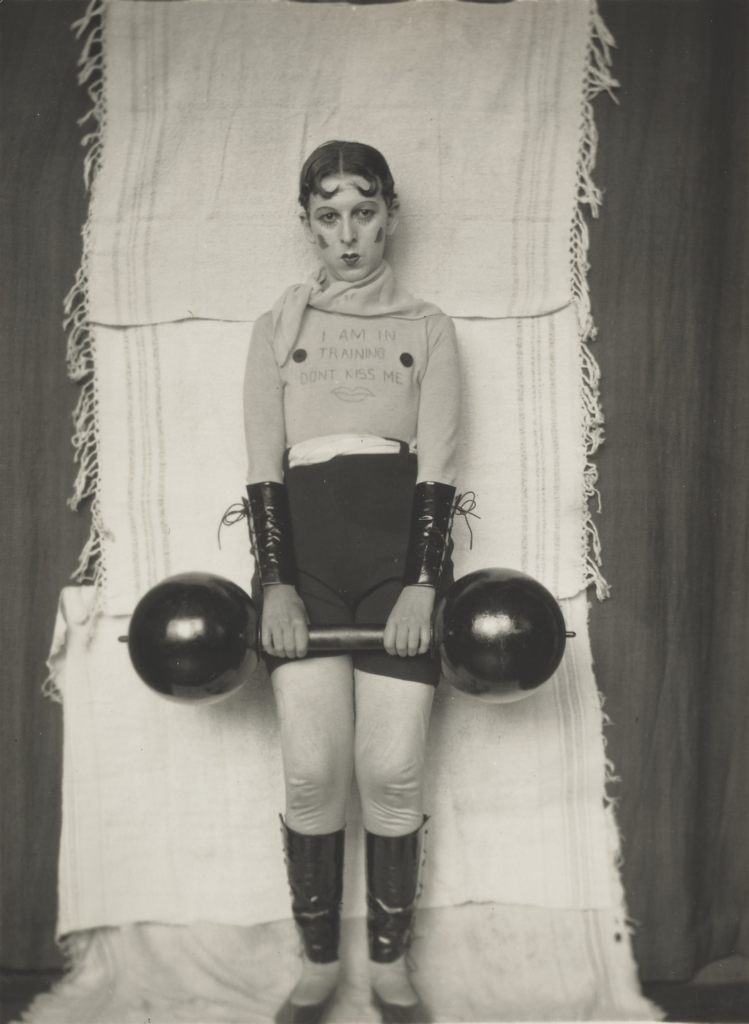
This photograph of Cahun’s also looks into the themes of masculinity, as Cahun (a women), who should stereotypically look more feminine, actually looks more masculine, because of the stereotype that men should be tough and strong, and should protect the female. Cahun relates to this stereotype, because of the prop she is using. She is using a prop weight in this photograph, which suggests she is strong and tough, which is more of a masculine trait in society. Cahun has dressed up as a more masculine ‘character,’ or another version of herself,’ so she can show society that gender fluidity is a real thing and that stereotypes are not correct most of time and that females can be masculine (vies versa). However, Cahun’s makeup also suggests that she is quite feminine, as women were the only gender that wore make up back in this day as this was what society deemed correct. Cahun wearing feminine make up, while using a more masculine prop really enhances her gender fluidity, as she can be feminine and masculine at the same time. This is proves the stereotype that men are strong and tough and that females are weak and emotional, because her being feminine while carrying the weight, suggests that women can also be just as strong and tough as men can.
Cindy Sherman
Cindy Sherman experiments with different female stereotypes, such as a housewife etc, by masquerading as a myriad of characters. Cindy Sherman (American, born 1954) invents personas and tableaus that examine the construction of identity, the nature of representation, and the artifice of photography. To create her images, she assumes the multiple roles of photographer, model, makeup artist, hairdresser, and stylist. Whether portraying a career girl, a blond bombshell, a fashion victim, a clown, or a society lady of a certain age, for over thirty-five years this relentlessly adventurous artist has created an eloquent and provocative body of work that resonates deeply in our visual culture.
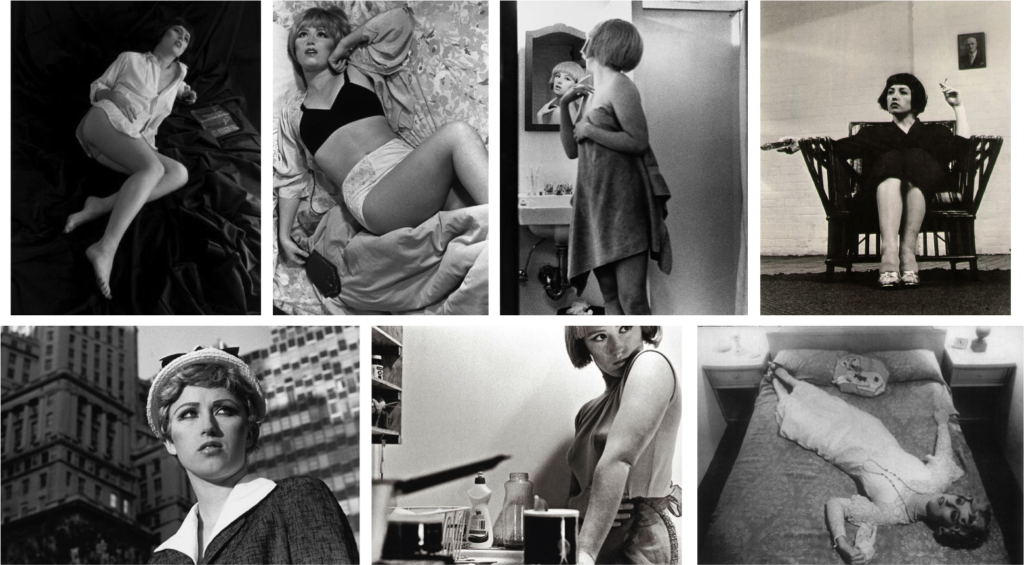
Sherman works in series, and each of her bodies of work is self-contained and internally coherent; yet there are themes that have recurred throughout her career. The exhibition showcases the artist’s individual series and also presents works grouped thematically around such common threads as cinema and performance; horror and the grotesque; myth, carnival, and fairy tales; and gender and class identity.
Cindy Sherman experiments with gender identity and femininity, by show casing the socially desirable female and how different ways culture defines a women. Her art plays on the feminist idea that gender arises exclusively within culture and deconstructs dominant gender ideologies, representing the underside of popular culture’s definition of “woman.” She exposes the arbitrariness of performativity and presents a variety of female identities that are found within popular culture, and reveals that these are nothing more than constructions. Behind each character there is no central identity. Each is a series of manipulations according to cultural conventions. There is no essential femininity, instead that the whole self is an imaginary construct that can be changed through performativity.
Image Analysis
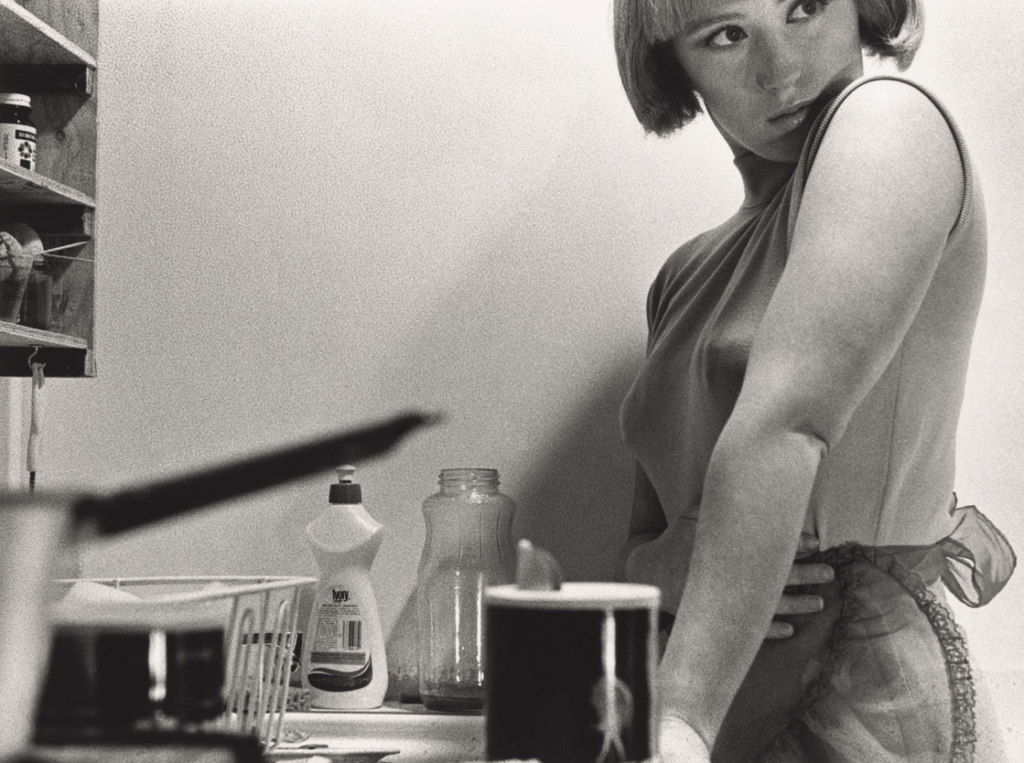
This photograph of Cindy Sherman, that she also took using equipment such as a timer, looks into the topic of femininity and masculinity, as she is producing many different female stereotypes. Sherman dresses up as many different common stereotypes, like she has in this photo. She has dressed up as a housewife, because a common stereotype is that women should be mothers and housewives. This photo also suggests the idea that she is a mother, because she is looking over her shoulder into the distance, which could suggests she is watching a child, while trying to cook dinner or lunch. We are given the impression she is cooking, from the props, which include salt, dish soap, the handle of a cooking pan etc. This suggests that she is in the kitchen, because this is where all these props are commonly found. Sherman also looks more feminine in this photo, because another stereotype of women is that they should look more feminine, because this is what society deems correct. Sherman presents all these different stereotypes to show that she can be anyone, as she has dressed up and been all of these ‘characters’ and stereotypes. This shows that no one knows the real Cindy Sherman, just like no one knows people beneath their stereotypes.
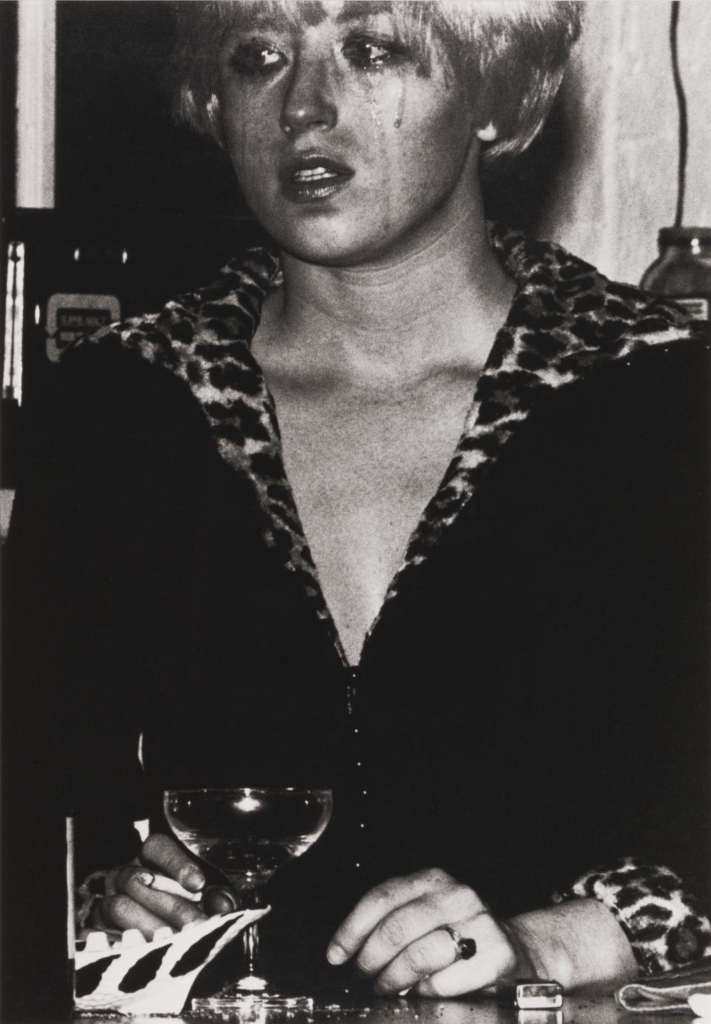
This image is of Cindy Sherman and also taken by her. This image looks into the theme femininity and masculinity, because it shows a stereotype of women. The stereotype that Sherman is presenting in this image is that women are weak and too emotional. She presents this, by having her crying in this image, with mascara and tears dripping down her face, leaving streaks in her makeup. She also uses props in this photo, which includes a cocktail glass, which suggests she is drinking alcohol, while crying, which suggests that she is having a big meltdown. Another prop is her cigarette in her hand and the lighter on the table, showing that she is very stressed and upset and that she is smoking a cigarette, to try and help her calm down. The mess on the table is also used as a prop to show how distraught and emotional she is, as it looks like tobacco all over the table. This suggests that she was so distraught and crying so much, that she couldn’t really see what she was doing while rolling her cigarette and was spilling it everywhere. She also looks more feminine with makeup and having mascara and makeup streaks while she is crying, because it shows that she is more feminine, as makeup was only worn by women at this time, as that what was deemed correct by society. She is looking more feminine, because another stereotype of women is that they should wear makeup and look more feminine, because that is what society deems expectable. Sherman is becoming this stereotype, as well as all the other stereotypes or ‘characters’ she has become, so she can show everyone that a women could be anyone and so could Cindy Sherman, as no one knows who the real Cindy Sherman is, they just know all the different stereotypes that surround her, which is the same as every women or man, who has been stereotyped.
All the photographs of Cindy Sherman, where she is dressed up as a ‘character’, to present different stereotypes are called Film Still #… This is because each of her photographs were taken from a scene from different movies. This shows how stereotypes were widely spread by the media and society and that this was how women were represented and how stereotypes were massively used and portrayed.
Cindy Sherman and Claude Cahun
Cindy Sherman and Claude Cahun both presented similar work, and did it in a similar way. Both presented different stereotypes in their work, and wanted to fight societies ideas of women and stereotypes. They both did this by becoming the different stereotypes and dressing up as different ‘characters’ to show that they could be anyone and that no one knew the real them. However, they also had differences in their work, as Sherman only portrayed the more feminine stereotypes, whereas Cahun presented both feminine and masculine stereotypes, as she was really pushing the idea of gender fluidity. Sherman also took her stereotypes from stereotypes in different movies or in the media to really present how wide spread these stereotypes are. Whereas, Cahun took her stereotypes from society and challenged society with the different stereotypes, and with gender fluidity, as she became more masculine, when she was a women.
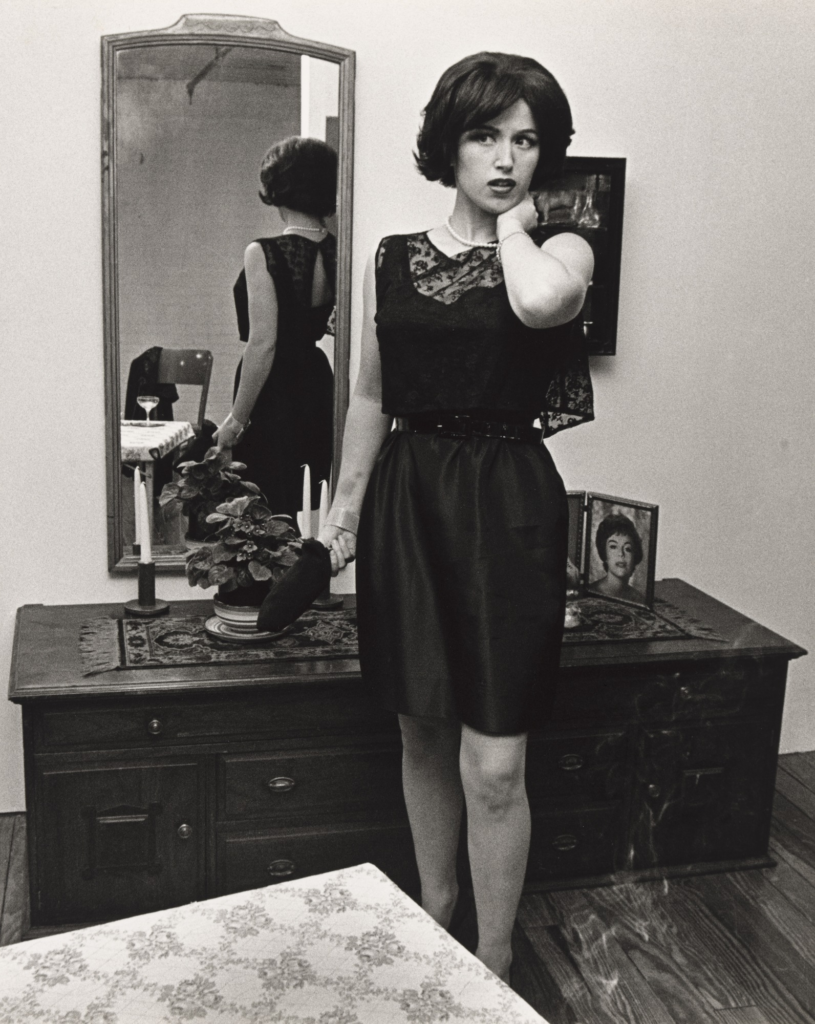


Jessica, both artists case studies are good, providing very good insights into the artists work. However, you can provide more critical analysis and perspectives.
For example, use references to interviews or reviews of their work and bring in quotes from something they has said themselves about their work, method or practice, and someone else, like an art critic, historian etc. Then you can agree or disagree with their analysis or point of view and develop a critical view of her work from that.
In preparation for Mock Exam on Wednesday 24 Jan, make sure you complete and publish following missing blog posts:
1. Photoshoots + image selection and adjustments x 2
2. Show experimentation with images in LR or Photoshop etc